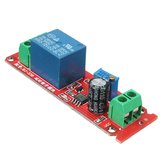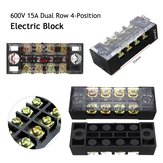Garrett, if you look at ACDX Rob's excellent diagram you will notice that he says to use a jumper strip on one side of the barrier. A jumper strip is a thin metal strip that looks sort of like a comb. Think of the prongs of the comb and imagine two going under each screw on one side of the barrier strip. Now all of the screws on that side of the barrier strip are electrically connected. So, if you attach your red (hot) wire to any of the screws on the side with the jumper strip all of the screws receive current.
0 0 0 0 0 0 <---- terminal block barrier screws (to accessories)
0 0 0 0 0 0 <---- terminal block barrier screws (power side)
I___I___I___I___I ___I___I <---- jumper strip (like a metal comb)
After adding the jumper strip....
0 0 0 0 0 0 <----- terminal block barrier screws (wire one per accessory)
I_0_I_0_I_0_I_0_I_0_I_0_I <----- term. block barrier screws with jumper installed so
all are connected. Attach hot (red) lead from + (A) post of transformer to any screw on this side of barrier strip and jumper provides power to all screws on this side.
Each wire to an accessory will go from a screw on the terminal block (top row of screws in the diagram) to the switch for the accessory, then on to the + pole on the accessory. You wire the same for the (-) (black) wire on a second terminal block strip, but there is no need to connect to the switch for the accessory.
You can get jumper strips from allelectronics.com. They sell the terminal blocks and jumper strips that go with them. No doubt there are other sources. My local Radio Shack was out of stock.
Good luck with your project.









 I use these. Search for 8 way bus bar from ebay. About $9, but make it easier.
I use these. Search for 8 way bus bar from ebay. About $9, but make it easier.





.jpg)






